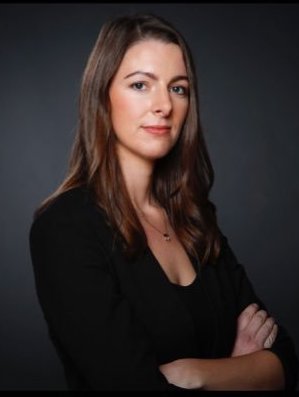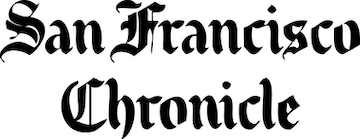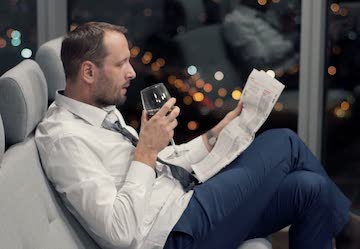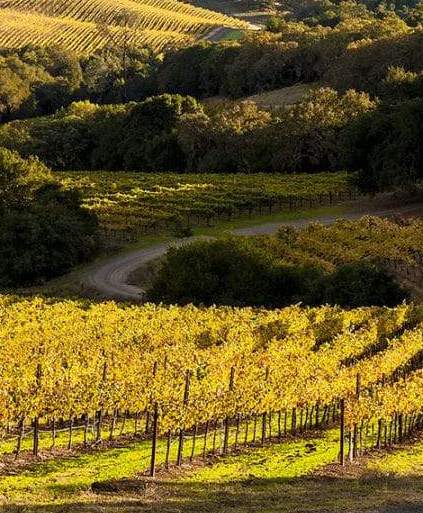Wine Journalism Takes a Turn for the Better
 Things you don’t see much these days: Fax-based marketing, beepers on hips, rotary phones and job listings for “Newspaper Wine Reporter”.
Things you don’t see much these days: Fax-based marketing, beepers on hips, rotary phones and job listings for “Newspaper Wine Reporter”.
And so it was with shock and honest giddiness that I perused a job description for a San Francisco Chronicle Wine Reporter. But let’s break this down. Back in the day, there were a number of “wine writers” that were employed in one way or another by large and medium-sized daily and weekly newspapers. They were rarely called “reporters”. They wrote not just about what’s a good wine for Thanksgiving and how to properly open sparkling wine, but also about what was happening in their metro areas where wine was concerned.
These wine writers have largely gone by the wayside. The demise of local newspapers (I’m looking at you Craigslist) meant shedding writers and reporters. Publishers looked first at those writers that were largely specialty in nature and whose columns were supported by local businesses with an interest in the subject matter of the specialty columnists. For the wine writer’s column, that meant a local wine shop, a couple of restaurants and maybe a local winery advertising on Wednesday when the column ran. Well, as the lack of classified ads and a general migration to the internet helped destroy the financial foundation of newspapers, those advertisers went away and began spending their ad dollars in other venues (usually digital and usually Google or Facebook).
I write all this to try to emphasize the extraordinarily odd thing it is to see a larger daily newspaper posting a job description for “Wine Reporter” as opposed to a “digital design pro” or such.
But, let’s show why the Chronicle’s search for a new Wine Reporter is actually EXTRA extraordinary. The San Francisco Chronicle ALREADY employs a wine reporter in the form of Esther Mobley, who came to the Chronicle in 2015 as a 24-year-old former assistant editor at the Wine Spectator. For a guy like me who may have consumed more wine-related media than anyone else alive and who has done so for 30 years and who has watched the decline of wine-related reporting in daily papers for most of that time, the San Francisco Chronicle is an outlier for having an Esther Mobley on staff. I’m not sure what having two wine reporters will make the Chronicle. What do you call an outlier beyond an outlier?
A note about Esther Mobely: Upon her arrival at the Chronicle she was relatively unknown. That’s not unusual. I mean…we are talking a wine writer, not a political columnist, business writer, etc. What was unusual about Esther was her age. There was a good deal of questioning of the decision to hire her primarily having to do with her age and a lack of life experience. Despite the fact I don’t always agree with her perspective or choice of subject matter, I can say unequivocally that six years into her tenure at the Chronicle, Esther has proven to be among the most interesting, accomplished, and provocative wine writers working, regardless of the medium. And, she can genuinely be called a “reporter” while also spinning up an array of wine words to describe a bottling.
unknown. That’s not unusual. I mean…we are talking a wine writer, not a political columnist, business writer, etc. What was unusual about Esther was her age. There was a good deal of questioning of the decision to hire her primarily having to do with her age and a lack of life experience. Despite the fact I don’t always agree with her perspective or choice of subject matter, I can say unequivocally that six years into her tenure at the Chronicle, Esther has proven to be among the most interesting, accomplished, and provocative wine writers working, regardless of the medium. And, she can genuinely be called a “reporter” while also spinning up an array of wine words to describe a bottling.
And so the fact that the SF Chronicle already has not only a Wine Reporter on staff but a very good Wine Reporter on staff, the question that needs to be answered is why? Why hire another? Mobley explained to me:
“We have better tools for understanding our audience than we did in the past, and we’ve been able to see just how much demand there is from our audience for wine coverage. Wine stories (as well as food stories) are among the biggest drivers of new subscriptions at the Chronicle. We want to double down on that success and invest even more into it.”
One thing that should be pointed out is that the Chronicle’s hiring of a second Wine Report is not a leading nor a trailing indicator of anything. There is absolutely no reason to believe it is a harbinger of a renaissance in wine journalism at the dailies or anywhere else. However, it’s noteworthy that the Chronicle expects much more from its Wine Reporter than what the average reader expects from a wine reporter. From its job listing for the position:
“The Wine Reporter is a journalist with a nose for news and a passion for California’s vibrant wine, beer, spirits and cocktail scene. Unlike other wine publications that speak to a rarefied, insider audience, The Chronicle aims to democratize wine knowledge and illuminate the ways in which wine can tell the story of the Bay Area — particularly in Sonoma and Napa counties, the country’s most important wine region. Wine coverage at The Chronicle isn’t simply about recommending bottles to drink. This beat involves reporting on various topics that inform the wine industry, including real estate, business, local politics and climate change. “
 What we see here is the idea that wine can be a lens through which culture and society and community might be interpreted. One complaint about the wine writing fraternity is it tends to churn out an eye-glazing mashup of descriptors that becomes terribly boring after the smallest amount of consumption. While there is undoubtedly a place for wine reviews with their descriptors and points, it does very little other than engage the engaged. On the other hand, stories about the impact of wildfires on wine and wine insurance, the question of how gender politics intersects with the wine world, the impact of the super-rich on the Bay Area’s wine culture, and the use of sham marketing applied to wine are all “wine stories” that get us well beyond the norm. And this is what Esther and her editors at the San Francisco Chronicle have brought to the paper and its readers over the past few years. It’s also the most obvious, yet seldom used, way in which the topic of wine can become interesting to those folks whose last interaction with wine is likely moving aside the box to get to the mayonnaise.
What we see here is the idea that wine can be a lens through which culture and society and community might be interpreted. One complaint about the wine writing fraternity is it tends to churn out an eye-glazing mashup of descriptors that becomes terribly boring after the smallest amount of consumption. While there is undoubtedly a place for wine reviews with their descriptors and points, it does very little other than engage the engaged. On the other hand, stories about the impact of wildfires on wine and wine insurance, the question of how gender politics intersects with the wine world, the impact of the super-rich on the Bay Area’s wine culture, and the use of sham marketing applied to wine are all “wine stories” that get us well beyond the norm. And this is what Esther and her editors at the San Francisco Chronicle have brought to the paper and its readers over the past few years. It’s also the most obvious, yet seldom used, way in which the topic of wine can become interesting to those folks whose last interaction with wine is likely moving aside the box to get to the mayonnaise.
Mobley confirms this kind of higher ambition as another reason for the Chronicle’s second Wine Reporter:
“We also want to expand the sorts of topics that our wine coverage addresses. I think there’s room for us to go deeper on stories about climate change and the environment, for example. We want to be able to do more breaking news about industry developments in Napa and Sonoma, but we also still want to produce lots of ambitious narrative features. To do that, we need another body. I write a lot, but there’s only so much one person can do.”
You may be saying, “Yeah, but it’s the SAN FRANCISCO Chronicle, just a few miles down the road from Napa and Sonoma, so of course they would have augmented wine coverage.” This is true and Mobely and the Chronicle editors are aware of this advantage and responsibility. Mobley noted:
“Obviously, the Chronicle is in a unique position when it comes to wine coverage compared with newspapers in other parts of the country. We get to cover the western hemisphere’s most important wine region in a special way because it’s in our backyard, and we can go granular on a level that reporters elsewhere can’t. We can take for granted that our readers have some familiarity with wine country and its institutions. They care about what happens there. And they love wine. Now we’re hoping to give them even more of it.”
While this proximity to Napa Valley and Sonoma County and Livermore Valley and Mendocino and the Sierra Foothills and Santa Cruz and Lake County wine regions helps explain the addition of a second wine reporter at the Chronicle, it does not diminish just how extraordinary the additional reporter is given the now well-established trend of jettisoning wine from the paper and digital pages of newspapers.
Mendocino and the Sierra Foothills and Santa Cruz and Lake County wine regions helps explain the addition of a second wine reporter at the Chronicle, it does not diminish just how extraordinary the additional reporter is given the now well-established trend of jettisoning wine from the paper and digital pages of newspapers.
I have great expectations for this experiment the Chronicle is embarking upon. I expect with the right person the move will further raise the bar for wine writing in the U.S. I expect it will further the reputation of the San Francisco Chronicle among the wine trade and wine consumers. I expect I’ll completely disagree with some of the perspectives of the two wine reporters. And I expect I’ll continue to read the paper more closely and happily than ever.

Wine journalism emerges from the abyss of the corporate bean counter ooze.
Thanks for this great piece, Tom. Esther is why I subscribe to the Chronicle. And if there’s a chance of more writing like hers, using wine as a lens to examine the Bay Area and beyond, I will be an avid ready of this new writer too.
Ditto for me – I subscribe to the Chronicle because of Esther’s columns – it has been a breath of fresh air in wine writing. She did a zoom tasting that my wife STILL talks about – just pairing 3 wines (you could choose which you wanted, but she was looking for a Rose, a Chardonnay and a “big red”) with different foods and getting comments about the success – or lack thereof – of the pairing!
Tom I really enjoyed this piece and you are spot on that this is EXTRA ordinary performance for a broadsheet. I had to laugh as well—“an eye-glazing mashup of descriptors!” For me, some of them turn into “nausea-causing” or derisive laughter. And yes I too love Esther’s writing when I can get her columns; I understand the need for a paywall, esp as staffers are fired and greet American newspapers are closed or dramatically and often fatally “downsized,” but I just can’t subscribe to 10 outlets. But this, at least, is a happy if almost unheard-of development.
I’m happy SF Chronicle is thinking outside of the box but I’m skeptical that there will be an ROI in the end. I suspect as you do that viewpoint diversity won’t be a hallmark of the hire.
I’m trying to imagine where the new subscriptions come from in that scenario. The stories and angles that aren’t being covered now will continue to not be covered. Neither writer will write about the fact that climate alarmists have been consistently wrong for 30 years. That labor cost and energy cost are crippling the industry. That the wildfires are exacerbated by bad environmental policy. The idea is to hire another writer who can tell us how great the local area food trucks are for cuisine. Got it.
The environment (see cancel culture) for hiring someone that will augment Esther is not high. Think of it as sports. You got pitching and you need hitting. You got the passing game and now you need the running game. Sure, we may get to see a few more outrage stories that Esther didn’t have time to write – the modern-day if it bleeds it leads…. but my guess is the there won’t be any new diversity in viewpoints expressed by the SF wine team and if it holds to be true that’s a shame.
Yes we’ll have to see what emerges and how subscribers react. But I want to give the benefit of the doubt and hope for some good but different from Esther. It’s not like there aren’t enough topics to pursue. —Dave, http://www.wine-flair.com